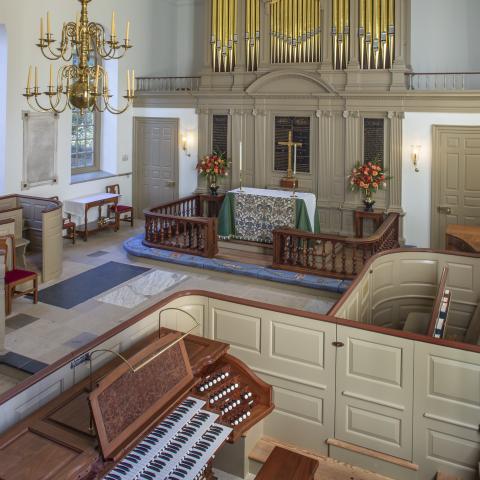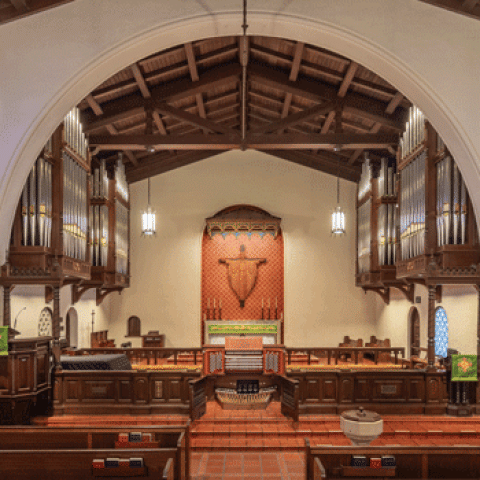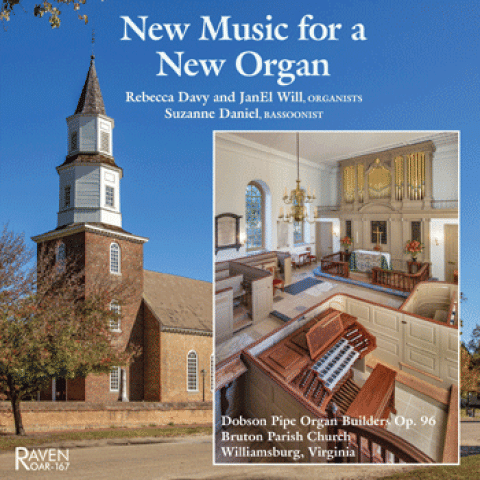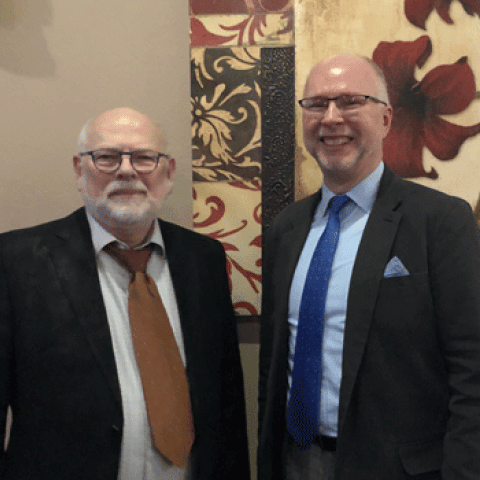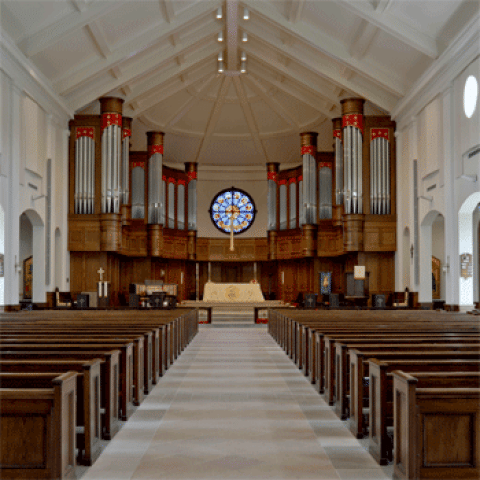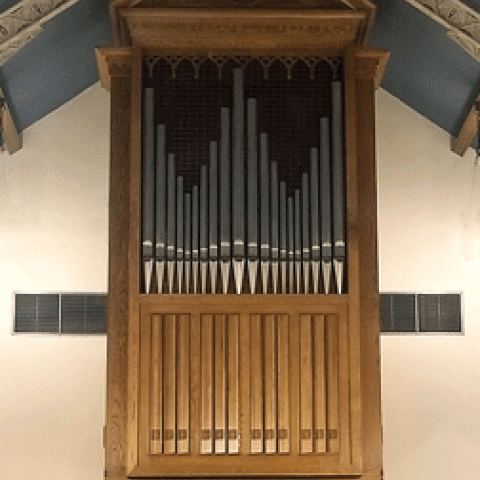
Dobson Pipe Organ Builders, Ltd., Lake City, Iowa, has built a new organ for Bruton Parish Church, Williamsburg, Virginia. Their Opus 96 comprises three manuals and pedal, 39 registers, 41 stops, 45 ranks, and 2,587 pipes.
The case is built of yellow poplar that is painted to match the existing woodwork. The front pipes of 75% tin are drawn from the Great Principal 8′ and the Pedal Octave 8′, and are overlaid with 22-karat gold leaf.
The organ console, like the pulpit, is constructed of black walnut. This locally grown walnut was obtained from a sawmill in Albert City, Iowa, and was dried in the traditional way; its varied colors are complemented by the Carpathian elm burl that enriches the console interior.
The new organ is featured on the cover of the January issue of The Diapason.
For information: www.dobsonorgan.com

